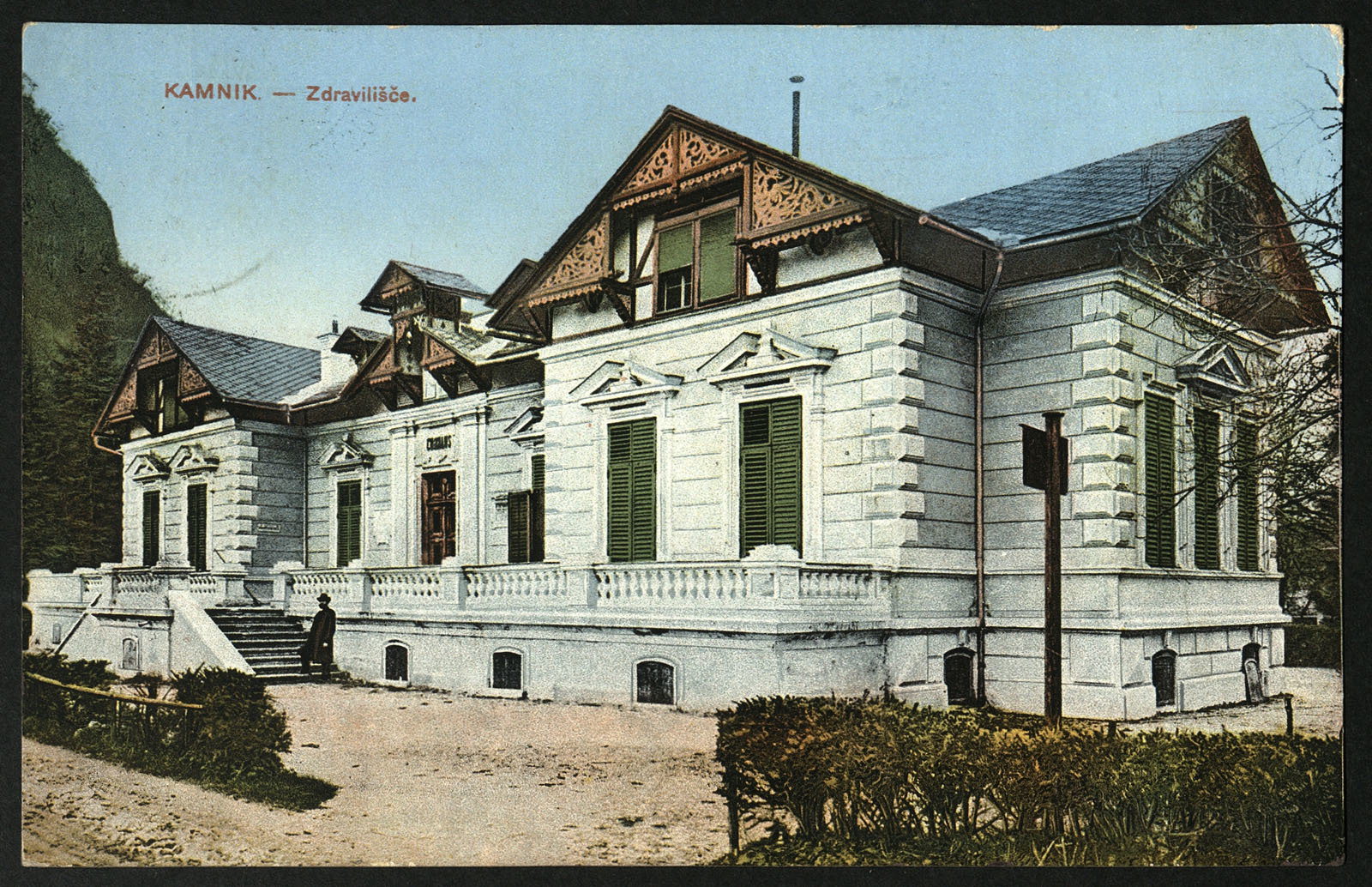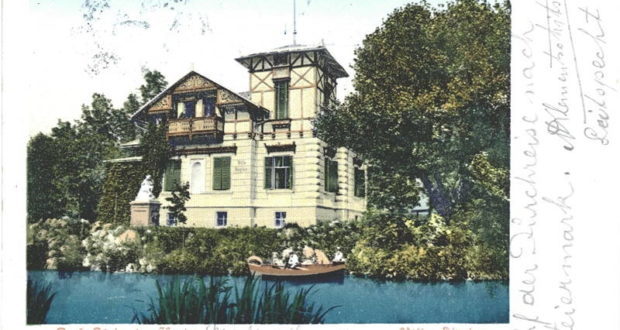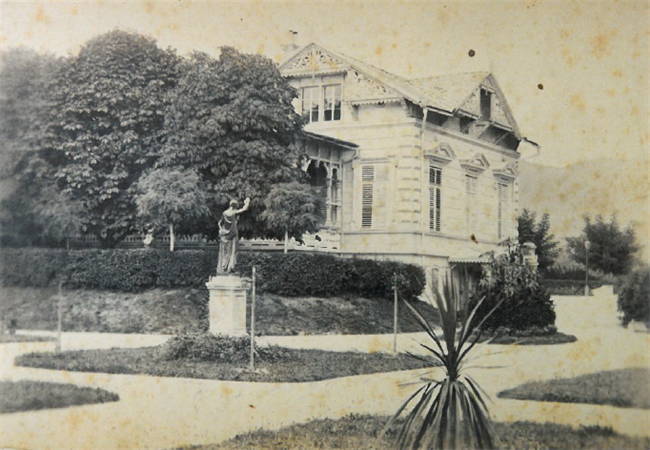


Ob imenu Kamnik prva asociacija zagotovo ni zdravilišče. In vendar je bil Kamnik v 19. stoletju zelo znano zdraviliško mesto, v katerem so gostom nudili takrat zelo priljubljeno kneippanje.
Kopališče je v Kamniku na sotočju med Kamniško Bistrico in Nevljico leta 1876 zgradil industrialec in gradbenik Alojz Prašnikar (1821-1899), ki je zgradil tudi kamniško smodnišnico in njeno več kilometrov dolgo obzidje. Uradno so se toplice imenovale »Bad Stein« (v prevodu Kamniške toplice), sicer pa se jih je prijelo ime »Kurhaus« (Zdraviliška hiša oz. Zdraviliški dom), po imenu glavne kopališke stavbe.
Prašnikar, ki je gradil tudi v drugih mestih takratne Avstro-Ogrske, je to izkoristil za širjenje glasu o zdravilišču, tako da so ga obiskovali ne le Ljubljančani, ampak tudi ljudje iz Trsta, Dunaja in Prage. Ob koncu stoletja se je celo kosal z Bledom in 16. junija 1883 ga je obiskal celo cesar Franc Jožef ter ga zelo pohvalil. Razcvet je doživelo še zlasti po tem, ko je bila iz Ljubljane do Kamnika leta 1891 zgrajena železniška proga.
Ob koncu stoletja je zdravilišče na obširnem mekinjskem posestvu Alojza Prašnikarja obsegalo osrednje zdraviliško poslopje, kopališče za izvajanje zdravilnih metod, velik urejen park ter štiri vile za nastanitev gostov, ki se jim je poleg prenočišča nudilo še prehrano s postrežbo in razne oblike zabave, Glavno poslopje je imelo veliko plesišče in obednico z marmornatimi stebri, pokrito in nepokrito verando. V spodnjih prostorih je bilo kegljišče, več točilnic, društvena soba, plesna dvorana, soba z biljardom in čitalnica. Zgornji prostori pa so bila urejena večja in manjša stanovanja za goste. Poleg tega so bile gostom v najem ponujene sobe v poletni hiši ob vili lastnika. Obe sta bili del t. i. Prašnikarije (Praschnikerhof). Tako je bilo na vrhuncu delovanja (1893) gostom na voljo okoli 60 postelj. Poleg zdraviliškega poslopja je stala stavba t. i. Vodnega zdravilišča. Kopališče je imelo sobe za tople, mrzle ter kropilne kopeli. Tik ob poslopju je bil plavalni bazen s kabinami ter leseno poslopje z raznim telovadnim orodjem. Pri samem zdravljenju je imel pomembno vlogo tudi sam park, ki je bil bogat z vodo in se je razprostiral vse od sotočja Bistrice in Nevljice mimo poslopij in se skupaj z drevoredom zaključil ob Prašnikariji. V parku je bilo urejeno teniško igrišče, igrišče za kriket ter kegljišče. Vodstvo je skrbelo za zabavo – godbo, shode, igre, plese, narodne veselice v kamniški čitalnici, sodelovanje z raznimi društvi, izlete, lov, ribolov … V okviru rekreacijske ponudbe zdravilišča je dal Prašnikar 1882 urediti t. i. severno pešpot na Stari grad in sprehajališče s klopcami v mekinjskem gozdu. Takrat je zdravilišče obsegalo še zdraviliško restavracijo in vilo Neptun. Kopališče je imelo vse priprave za uporabo vodnega zdravljenja z elektroterapijo in masažo ter bazen s tuši ter ustrezno zdravniško pomoč.
Razcvetu kamniškega Kurhausa je s Prašnikarjevo smrtjo 1899 sledil počasen zaton. Dokončen zlom je za zdravilišče pomenil začetek prve svetovne vojne. Na mestu nekdanjega zdravilišča danes stoji delavski dom, v bližini pa je Keršmančev park z otroškimi igrali.
Vir: Jasna Paladin: Kamniški Kurhaus v Kamniškem zborniku XVII, 2004


At the mention of Kamnik, the first association is certainly not a spa. Yet, in the 19th century, Kamnik was a very well-known spa town, offering its guests the then-popular Kneipp treatments.
The swimming pool was built in Kamnik at the confluence of the Kamniška Bistrica and Nevljica rivers in 1876 by the industrialist and builder Alojz Prašnikar (1821-1899), who also constructed the Kamnik gunpowder factory and its several kilometers long wall. Officially, the spa was named "Bad Stein" (in translation, Kamnik Spa), but it was commonly referred to as "Kurhaus" (Spa House or Health Resort), after the name of the main bathing building.
Prašnikar, who also built in other cities of the Austro-Hungarian Empire, used this to spread word of the spa, attracting not only residents of Ljubljana, but also people from Trieste, Vienna, and Prague. By the end of the century, it even rivaled Bled and on June 16, 1883, it was even visited and highly praised by Emperor Franz Joseph. The spa flourished particularly after the railway line from Ljubljana to Kamnik was built in 1891.
By the end of the century, the spa on Alojz Prašnikar's extensive Mekinje estate consisted of the central spa building, a swimming pool for performing healing methods, a large well-maintained park, and four villas for accommodating guests, who were offered not only overnight stays but also meals with service and various forms of entertainment. The main building had a large dance floor and a dining room with marble pillars, a covered and uncovered veranda. The lower rooms housed a bowling alley, multiple bars, a social room, a dance hall, a billiard room, and a reading room. The upper rooms were larger and smaller apartments for guests. In addition to this, rooms in the summer house next to the owner's villa were offered for rent. Both were part of the so-called Praschnikerhof. Thus, at the peak of operation (1893), about 60 beds were available to guests. Next to the spa building stood the building of the so-called Water Spa. The swimming pool had rooms for hot, cold, and splash baths. Right next to the building was a swimming pool with cabins and a wooden building with various gymnastic equipment. The park itself, rich in water and extending from the confluence of Bistrica and Nevljica past the buildings, ending with a tree-lined avenue at the Praschnikerhof, played an important role in the treatment. The park had a tennis court, cricket field, and bowling alley. The management took care of entertainment - music, meetings, games, dances, folk festivities in the Kamnik reading room, cooperation with various associations, trips, hunting, fishing... As part of the spa's recreational offer, in 1882, Prašnikar had a northern footpath to Stari grad and a promenade with benches in the Mekinje forest arranged. At that time, the spa also included a spa restaurant and the Neptun villa. The swimming pool had all the preparations for water treatment with electrotherapy and massage, a pool with showers, and appropriate medical help.
The flowering of the Kamnik Kurhaus followed a slow decline after Prašnikar's death in 1899. The onset of World War I marked the final collapse for the spa. Today, a single-room dwelling stands on the site of the former spa, and nearby is the Keršmančev Park with children's playgrounds.


S seboj imejte pisalo. Pri vračanju vsebnika pazite, da vas kdo ne opazuje.
Please have a pen with you. When returning the container, be careful not to be observed by anyone.